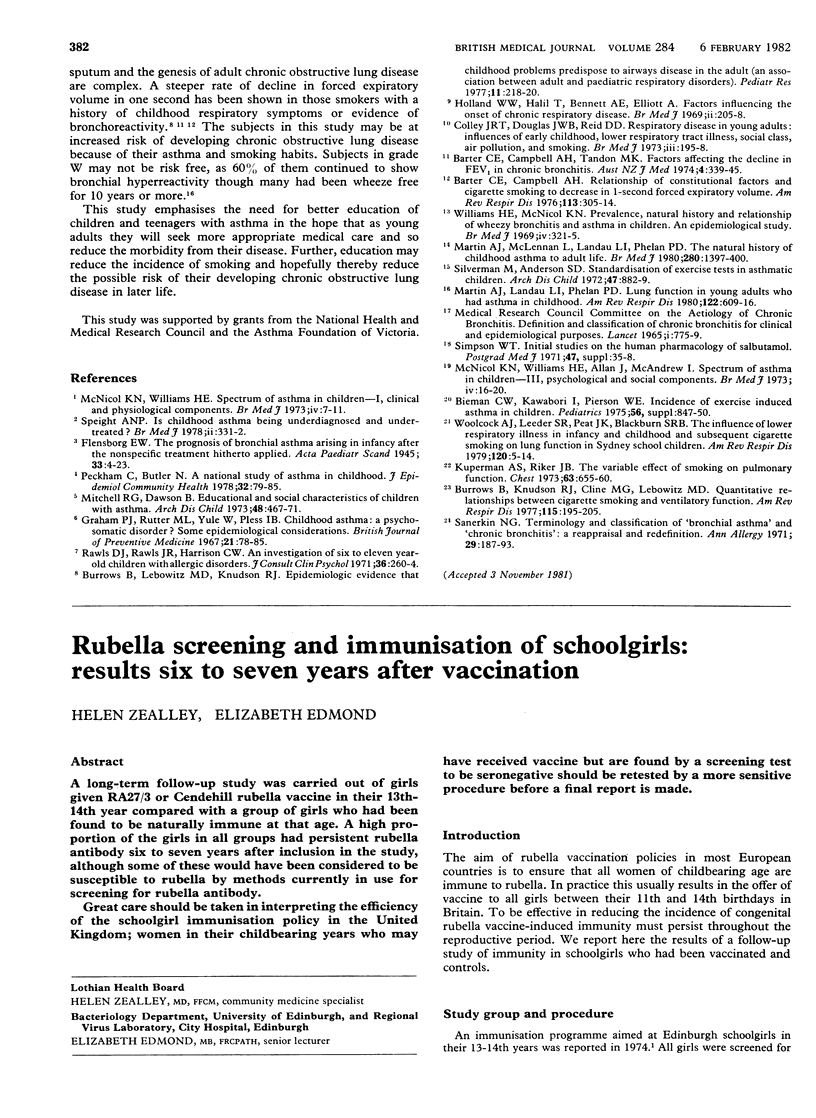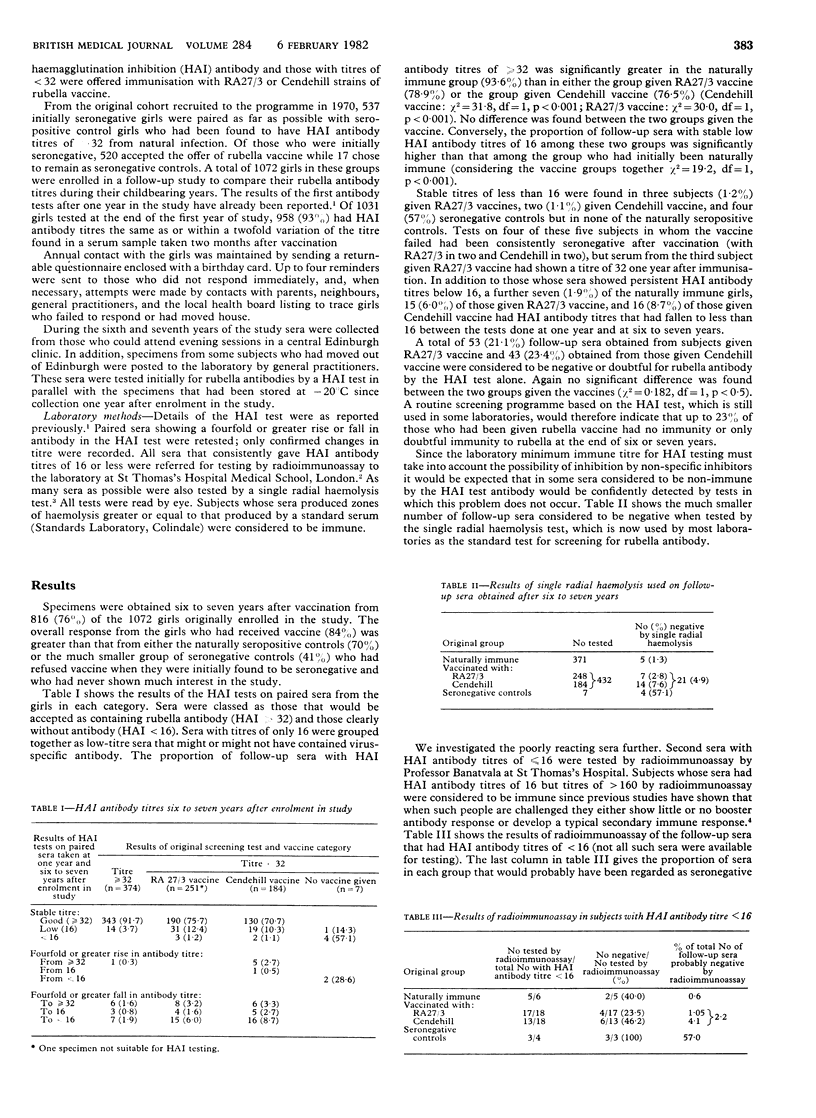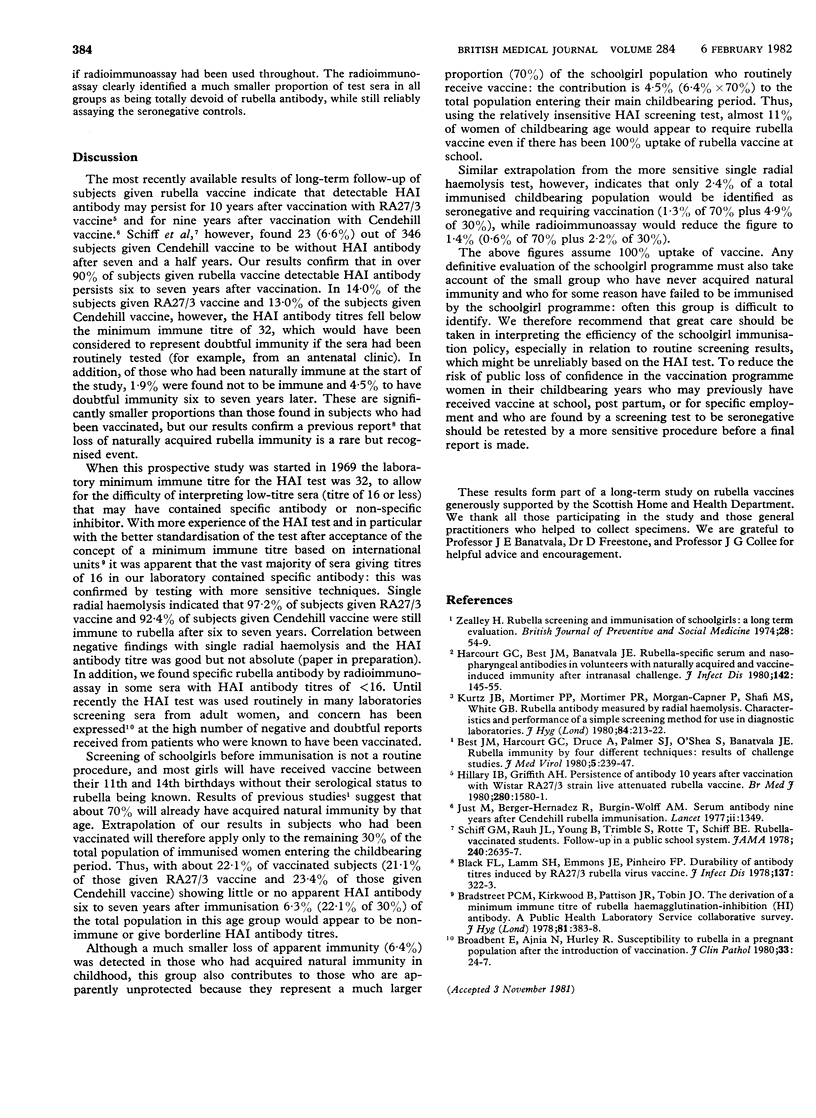Abstract
A long term follow-up study was carried out of girls given RA27/3 or Cendehill rubella vaccine in their 13th-14th year compared with a group of girls who had been found to be naturally immune at the age. A high proportion of the girls in all groups had persistent rubella antibody six to seven years after inclusion in the study, although some of these would have been considered to be susceptible to rubella by methods currently in use for screening for rubella antibody. Great care should be taken in interpreting the efficiency of the schoolgirl immunisation policy in the United Kingdom; women in their childbearing years who may have received vaccine but are found by a screening test to be seronegative should be retested by a more sensitive procedure before a final report is made.
Full text
PDF


Selected References
These references are in PubMed. This may not be the complete list of references from this article.
- Best J. M., Harcourt G. C., Druce A., Palmer S. J., O'Shea S., Banatvala J. E. Rubella immunity by four different techniques: results of challenge studies. J Med Virol. 1980;5(3):239–247. doi: 10.1002/jmv.1890050308. [DOI] [PubMed] [Google Scholar]
- Black F. L., Lamm S. H., Emmons J. E., Pinheiro F. P. Durability of antibody titers induced by RA27/3 rubella virus vaccine. J Infect Dis. 1978 Mar;137(3):322–323. doi: 10.1093/infdis/137.3.322. [DOI] [PubMed] [Google Scholar]
- Bradstreet C. M., Kirkwood B., Pattison J. R., Tobin J. O. The derivation of a minimum immune titre of rubella haemagglutination-inhibition (HI) antibody. A Public Health Laboratory Service collaborative survey. J Hyg (Lond) 1978 Dec;81(3):383–388. doi: 10.1017/s0022172400025262. [DOI] [PMC free article] [PubMed] [Google Scholar]
- Harcourt G. C., Best J. M., Banatvala J. E. Rubella-specific serum and nasopharyngeal antibodies in volunteers with naturally acquired and vaccine-induced immunity after intranasal challenge. J Infect Dis. 1980 Aug;142(2):145–155. doi: 10.1093/infdis/142.2.145. [DOI] [PubMed] [Google Scholar]
- Hillary I. B., Griffith A. H. Persistence of antibody 10 years after vaccination with Wistar RA27/3 strain live attenuated rubella vaccine. Br Med J. 1980 Jun 28;280(6231):1580–1581. doi: 10.1136/bmj.280.6231.1580-a. [DOI] [PMC free article] [PubMed] [Google Scholar]
- Just M., Berger-Hernandez R., Bürgin-Wolff A. Serum antibodies 9 years after cendehill rubella immunisation. Lancet. 1977 Dec 24;2(8052-8053):1349–1350. doi: 10.1016/s0140-6736(77)90387-7. [DOI] [PubMed] [Google Scholar]
- Kurtz J. B., Mortimer P. P., Mortimer P. R., Morgan-Capner P., Shafi M. S., White G. B. Rubella antibody measured by radial haemolysis. Characteristics and performance of a simple screening method for use in diagnostic laboratories. J Hyg (Lond) 1980 Apr;84(2):213–222. doi: 10.1017/s0022172400026711. [DOI] [PMC free article] [PubMed] [Google Scholar]
- Schiff G. M., Rauh J. L., Young B., Trimble S., Rotte T., Schiff B. E. Rubella-vaccinated students. Follow-up in a public school system. JAMA. 1978 Dec 8;240(24):2635–2637. doi: 10.1001/jama.240.24.2635. [DOI] [PubMed] [Google Scholar]


